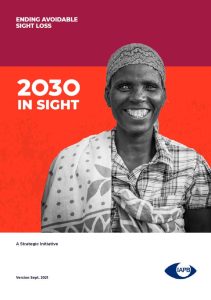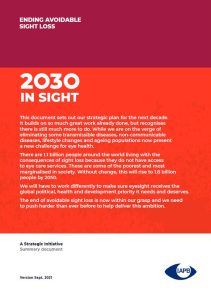Join a powerful, unprecedented alliance for better eye health for all.
Join IAPBEnding Avoidable Sight Loss

Progress made over that last decade has been extraordinary, but our most important days lie ahead and there has never been a great opportunity to improve the lives of billions of people.
Now is the time to ELEVATE vision as a fundamental, economic, social and development issue, INTEGRATE eye health in wider health care systems and ACTIVATE consumer demand and market change.
Select the arrows below to read more.
2030 In Sight brings together the WHO World Report on Vision, the Lancet Global Health Commission on Global Eye Health and the landmark UN Resolution, Vision for Everyone. This work guides the actions we take over the next decade to ensure that 2030 will be in sight for all.
In the following video, Peter Holland, IAPB’s CEO presents the strategy, and why it is important that all of us sign up to it.
Do watch and share.
Get your copy of 2030 In Sight. Be part of the action and ensure your organisation is prepared to play its part in making equitable, accessible, and affordable eye health a reality for all.


The Strategy Document is also available in French Strategy Document (PDF, 14 MB), Spanish Strategy Document (PDF, 13 MB), Portuguese Strategy Document (PDF, 13 MB) and Arabic Strategy Document (PDF, 2 MB)
The Summary Document is also available in French Summary Document (PDF, 438 KB), Spanish Summary Document (PDF, 295 KB) and Portuguese Summary Document (PDF, 446 KB).
Banner: OneSight, Elevate panel thumb: IAPB Italy WSD 2017, Integrate panel thumb: Terry Cooper, Activate panel thumb: Al Baseer Foundation, Karachi WSD 2018